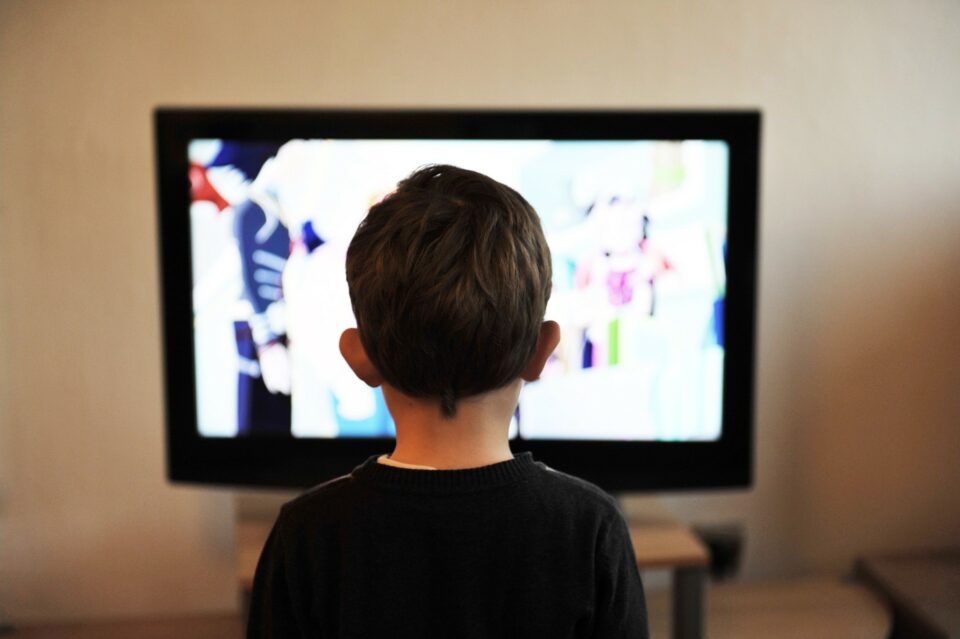In today’s digital age, technology is a vitally important part of life. From tablets to smart TVs, gaming consoles to phones, digital devices have permeated every aspect of our existence, including the lives of our children.
While these devices undoubtedly offer numerous opportunities, there are well-founded concerns about the impact of digital devices on child development, from educators, parents, and researchers alike. As we increasingly spend more time on our devices, we need to ensure that this technology isn’t damaging our children’s overall development.
You might be concerned about whether or not you allow your children enough or too much time on their devices. It’s not wise to completely ban them, as these are important things in everyday life, but too much exposure isn’t a good thing either.
On the one hand, digital devices give access to a vast number of educational apps, and interactive learning can enhance development. They can foster creativity, problem-solving skills, and give rise to different perspectives. Moreover, in an increasingly digital world, being tech-savvy is a skill for future success.
But of course, excessive screen time has been associated with effects on behavior, obesity, and sleep disturbances, Concerns also revolve around the on attention spans and social, language development. As children spend more time on their screens, they may miss out essential experiences like face-face interactions and imaginative play, and which are crucial for their holistic development.
Therefore, it is essential for parents to navigate this digital landscape wisely, and find a balance that maximizes the benefits while minimizing the potential risks. This article aims to explore the multifaceted aspects of this issue, offering practical tips to guide you in making informed decisions regarding digital engagement.
By understanding the potential benefits and risks associated with digital devices, we can empower ourselves to create a healthy and balanced digital environment that supports our children’s holistic development.
The Impact of Digital Devices on Child Development
We know that digital devices are extremely common. These devices offer a lot of benefits, but they can also hamper a child’s development if used excessively. It’s important to find right balance when it comes using these devices.
Before you can work out how to do exactly that, you need to understand that digital devices aren’t all good, but they’re not all bad either.
Let’s explore the positive and negative effects of digital devices on child development.
Positive Effects of Digital Devices on Child Development
Digital devices offer a range of positive effects on children’s development. So, what are the main ones?
Access to Educational Content
One biggest advantages of digital devices is that they allow children to access interactive educational content. There are countless apps available for children to access and learn. These apps can enhance their cognitive skills, improve problem-solving abilities, and even introduce them to different cultures. Through activities children can develop important skills like critical thinking, creativity, and communication.
These apps are often designed to help children learn through play, so much of the time they don’t even realise that they’re learning. This is undoubtedly one of the best ways to get them to ‘soak up’ new knowledge while using other skills, such as problem-solving methods, to take on board new thoughts and ideas.
Development of Problem-Solving & Cognitive Skills
Digital devices offer children increased access to develop their interests and passions. They can find a wide of resources such as videos, tutorials, and online communities that cater to the things they enjoy, whether it’s playing a musical instrument, discovering new techniques, or exploring scientific concepts.
Throughout this, children develop problem-solving and cognitive skills and again, much of the time they don’t realise the benefit they’re actually getting. Having a passion for learning is the best way to encourage children to want to understand more about the world and when you encourage them to explore their passions and interests, the benefits increase even more.
Digital devices make all of this so much easier. Apps allow children to explore the world, play instruments that perhaps they don’t have access to in real-life, and to watch videos about things they would never have otherwise understood.
Of course, games are also ideal for helping with problem-solving and cognitive skills and there are literally thousands of these available.
Developing Social Connections
Digital devices allow children to communicate and make social connections. They can make video calls, use messaging apps, and social media platforms to connect with family and friends who may live far away. This helps to strengthen relationships and develop social skills, especially important in today’s world. Connecting with people from different cultures is increasingly important.
Increasing Imagination & Creativity
We know that digital devices provide children with access to vast amount of information and resources. They can explore different topics watch educational videos, and read e-books, which can inspire imagination and creative ideas.
Many apps and games devices are designed to encourage creativity and imaginative play. They may involve storytelling, problem-solving, role-playing, allowing to use imagination and come up unique solutions and scenarios.
There are also numerous apps software that allow children to create digital art, design, and animations These a canvas children express their creativity and experiment with different colours, shapes, and visuals.
Negative Effects of Digital Devices on Child Development
While most of the negative effects of digital devices on children’s development comes down to overuse and not setting limits, it’s important to know what they are so the risks can be reduced.
Health Risks, Particularly Obesity
One of the main concerns about digital devices and child development is the impact of excessive screen time on physical health.
Spending too much time sitting, looking at a screen, can lead to a sedentary lifestyle, where children aren’t getting enough physical activity. This can contribute to health issues like obesity and can also affect overall fitness and well-being.
Social & Emotional Implications
When children spend too much time on devices, they may miss on face-face interactions with family and friends. This reduces their ability to communicate effectively, develop relationships, and to use their social skills. It can also limit their imaginative play, which is crucial for creativity and problem-solving skills.
Excessive Screen Time Impacts Cognitive Development
Excessive use of devices, i.e., too much screen time, can also have a negative impact on cognitive development. Research suggests much screen time can affect attention spans and concentration abilities.
It may also interfere with language development, as children may not have as many opportunities for verbal communication and language practice.
Factors to Consider in Achieving The Right Balance
As you can see, there are good sides and bad sides to using digital devices, but it’s also true that the positives are very hard to ignore. For that reason, ensuring you strike the right balance of screen time and usage can drastically cut down or even totally eradicate the possible negatives.
The following factors are crucial in striking that balance.
- Age appropriateness – It’s important to make sure that your child is watching and using content that is appropriate for their age. Setting restrictions on devices is a good way to ensure they’re not accidentally accessing something that could be damaging to them.
- Duration & frequency of device use – Set a screen time limit per day and make sure that your child is aware of why that is in place. We’ll talk about this in more detail shortly, but having limits ensures that your child still gets to spend time outside and interacting with others in person.
- Content selection & quality – Read reviews and look for the best apps and sites for your child to use. There are countless apps out there and they do vary in quality. You want your child to have the best learning experience and that means doing some research into where to direct them towards.
Strategies for Balancing Digital Device Usage
So, now you know about the pros and cons, how can you ensure that you get the balance right? That way, your child will be able to harness all the advantages of device usage, without wandering into the downsides.
Establishing Healthy Digital Device Habits
Establishing healthy habits in regard to device usage is a good starting point. These habits will become second nature and your child won’t try to push against them or rebel and sneak in a bit more screen time.
Here are some strategies you can try.
- Setting limits and boundaries – The limit you choose depends upon what you consider to be appropriate, but around 2 hours per day is often the norm. Boundaries should also be set, such as no screen time if they haven’t finished their homework or if they have behaved particularly badly.
- Creating tech-free zones – It’s a good idea to say that your child cannot use their devices in their bedroom at night. This means they’re less likely to be distracted during sleep time. You can also set other zones as tech-free, e.g., the living room. This means your child is more likely to interact with other family members.
- Encouraging alternative activities & hobbies – Encourage your child to indulge in their hobbies that do not involve technology. For instance, if they like to play a musical instrument, allow them to do this with an actual instrument and not an app. If they enjoy playing sports, encourage them to head outside and play.
Engaging in Interactive & Educational Content
Choosing the right content is vital if you want to help your child get the most out of their screen time. As we’ve mentioned already, there are far too many apps and sites to count and not all are high quality or even presenting accurate information. For that reason, checking the content your child accesses is important.
Here are a few ways you can do that.
- Identifying age-appropriate and educational apps/games – You can read reviews or look for recommendations on educational websites. You could even ask your child’s teacher for suggestions too.
- Encouraging active participation and critical thinking – Identify games and activities that push your child outside of the box. You can also help them with puzzles, while being careful not to lead them toward conclusions or answer for them.
- Promoting offline engagement with digital content – Download printables for your child to use offline, so they’re not always in front of a screen.
Parental Involvement & Support
Remember, children watch what you do and emulate it, so it’s important that you’re showing them the healthy way forward in relation to digital behaviour. If you’re always on your phone, they’re going to think that’s the way forward too.
So, make sure that you also set yourself boundaries in relation to device usage and you show your child the way forward.
Having open and honest conversations about device usage is also important. If you don’t explain to your child why you feel they shouldn’t be on their screens too much, they’re not going to follow the rules and they’re going to question them at the very least. Explain that it’s important to be away from the screen just as much as it can bring benefit to be in front of it.
Communicate your expectations clearly and make sure your child understands.
Finally, make sure you monitor and guide your child’s device usage carefully. If you feel they’re not following the rules, talk to your child and reaffirm its importance.
Resources & Tools For Parents
All parents have the same situation as you – they want their child to benefit from device usage and all the advantages it can bring, but they also want to ensure that they’re not harming their child’s development at the same time.
Thankfully, there are many tools and resources you can use. Online forums allow you to speak to other parents about what they do to manage and monitor their child’s screen time. You could also set up parental controls and monitoring software on your child’s devices and check out online safety resources, so you’re up to date with everything you need to know.
Of course, in the end, if you feel you need help and advice, you can always reach out and seek professional assistance. Your child’s teacher may be a good starting point.
Conclusion
There’s no denying that technology has brought us countless benefits, but we can’t ignore the possible downsides either. Children’s minds are very easily influenced and if they are exposed to the wrong kind of content, or they spend too long in front of a screen, it can be very damaging on many levels.
Striking the right balance between on screen and off-screen time is therefore important. In that case, your child gets the best of both worlds, and you can rest assured that they’re grabbing all the benefits of the online world, without their health or development being damaged along the way.




